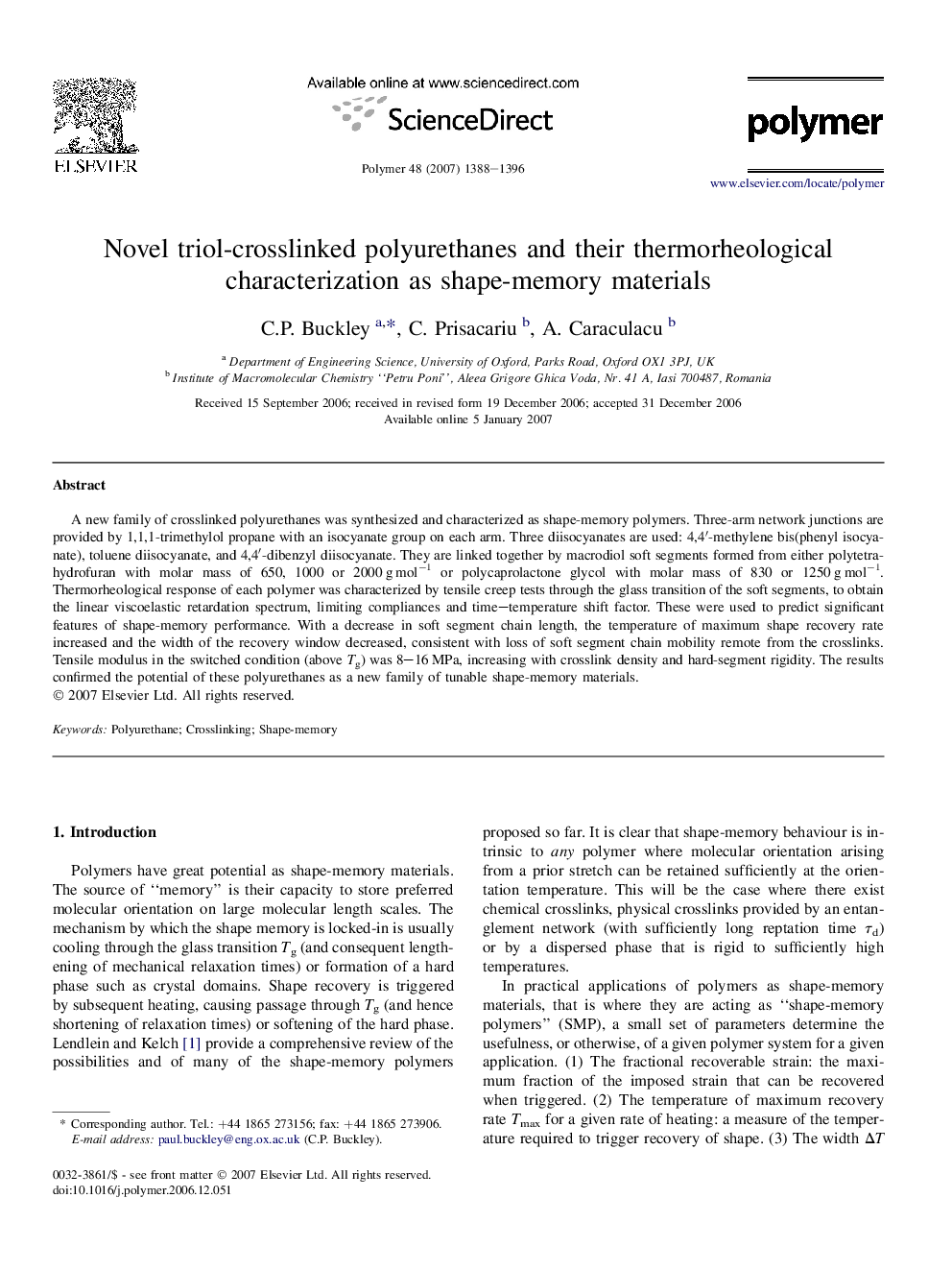| Article ID | Journal | Published Year | Pages | File Type |
|---|---|---|---|---|
| 5186137 | Polymer | 2007 | 9 Pages |
Abstract
A new family of crosslinked polyurethanes was synthesized and characterized as shape-memory polymers. Three-arm network junctions are provided by 1,1,1-trimethylol propane with an isocyanate group on each arm. Three diisocyanates are used: 4,4â²-methylene bis(phenyl isocyanate), toluene diisocyanate, and 4,4â²-dibenzyl diisocyanate. They are linked together by macrodiol soft segments formed from either polytetrahydrofuran with molar mass of 650, 1000 or 2000 g molâ1 or polycaprolactone glycol with molar mass of 830 or 1250 g molâ1. Thermorheological response of each polymer was characterized by tensile creep tests through the glass transition of the soft segments, to obtain the linear viscoelastic retardation spectrum, limiting compliances and time-temperature shift factor. These were used to predict significant features of shape-memory performance. With a decrease in soft segment chain length, the temperature of maximum shape recovery rate increased and the width of the recovery window decreased, consistent with loss of soft segment chain mobility remote from the crosslinks. Tensile modulus in the switched condition (above Tg) was 8-16 MPa, increasing with crosslink density and hard-segment rigidity. The results confirmed the potential of these polyurethanes as a new family of tunable shape-memory materials.
Keywords
Related Topics
Physical Sciences and Engineering
Chemistry
Organic Chemistry
Authors
C.P. Buckley, C. Prisacariu, A. Caraculacu,
